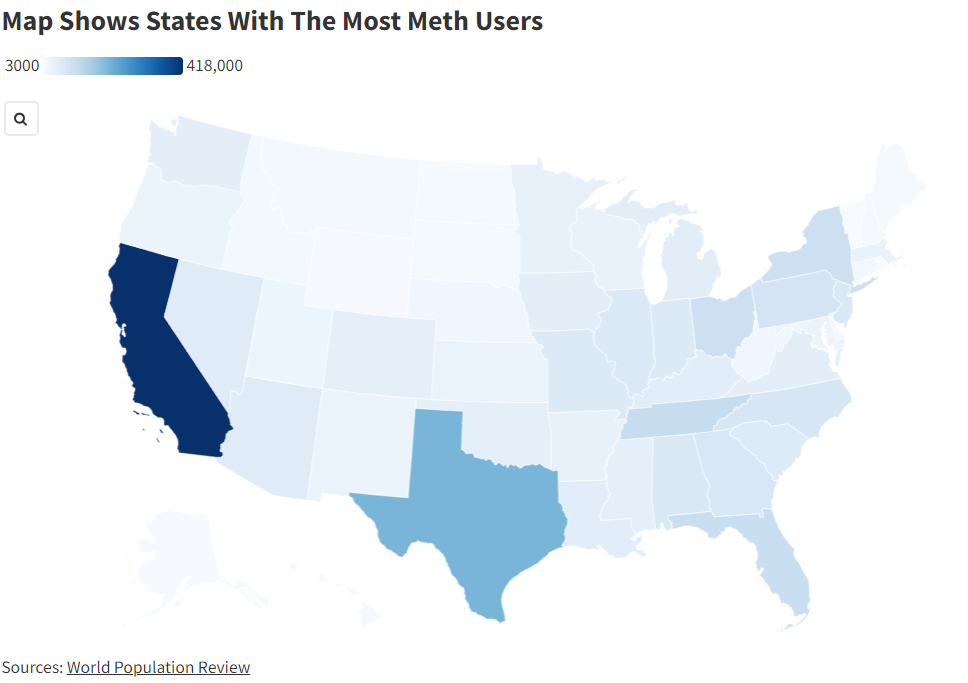Methamphetamine is a significant factor in overdose fatalities across the U.S., particularly among stimulants, excluding cocaine.
According to 2021 data from the World Population Review, California leads the nation with approximately 418,000 meth users. Texas follows with around 197,000, while Tennessee, Florida, and New York complete the top five.
The Centers for Disease Control and Prevention (CDC) reported that 36,251 individuals died from psychostimulant overdoses in 2023, showing a slight rise from 35,550 in 2022.
While synthetic opioids like fentanyl remain the main contributors to drug-related deaths (an estimated 74,702 lives lost in 2023), methamphetamine use appears to be on the rise, with its reach extending from Western to Eastern U.S. regions. This trend can be attributed to greater availability and decreasing costs.

Daniel Bockwoldt/DPA
Historically, meth was mostly produced domestically with simpler synthesis methods, often involving cold medications. However, transnational drug trafficking organizations have adopted advanced manufacturing techniques, allowing them to lower production costs and enhance potency.
Today’s meth is not only cheaper but also more pure and dangerous than ever before. U.S. Customs and Border Protection (CBP) officers have confiscated over 123,573 pounds of meth at the southern border, reinforcing the correlation between drug influx and the states reporting high user counts like California and Texas.
As a potent central nervous system stimulant, meth was first developed in the early 20th century and used in decongestants and bronchial inhalers. Classified as a Schedule II stimulant by the U.S. Drug Enforcement Administration (DEA), it can only be prescribed in limited doses for conditions like ADHD and short-term weight management due to its high misuse potential.
Meth use carries severe health risks, including an increased vulnerability to infectious diseases like HIV and hepatitis B and C. Other harmful effects include drastic weight loss, addiction, dental issues, anxiety, memory impairment, sleep disturbances, paranoia, and violent outbursts.
In the previous year, 32,537 overdose deaths involving psychostimulants were recorded by the CDC.
Throughout 2022-2023, CBP seized nearly 549,000 pounds of illegal drugs, with meth constituting the second most confiscated substance at around 140,000 pounds. In the first half of the 2023-2024 fiscal year, the seizures continued, amounting to 135,769 pounds of meth nationwide as of June 2024.
Research from the National Institute on Drug Abuse (NIDA) indicates that about 2.5 million individuals aged 12 and older in the U.S. have reported using meth.
